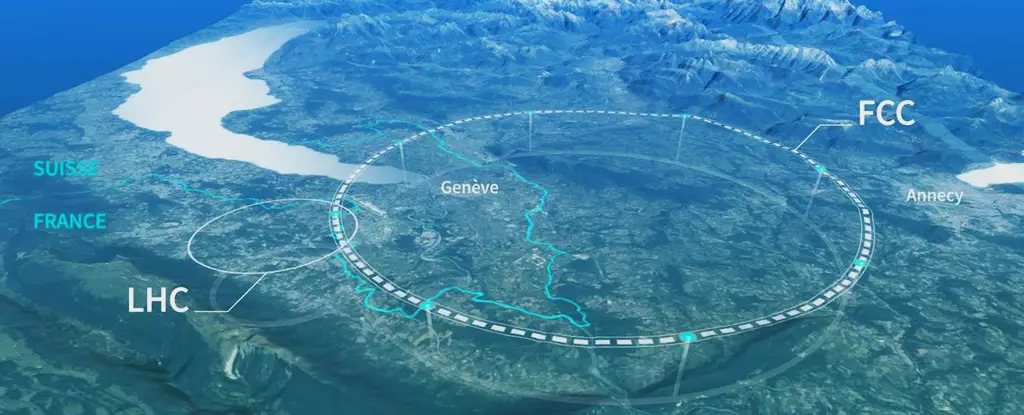With the completion of the Large Hadron Collider (LHC), the scientific community reached a significant milestone by discovering the elusive Higgs Boson. However, this accomplishment has not yet led to a major breakthrough in merging gravity and quantum physics. In order to push the boundaries of our understanding of the universe further, plans are underway to build the Future Circular Collider (FCC), a new and more powerful particle collider.
Over the past few decades, particle colliders have played a crucial role in unraveling the mysteries of the universe at its fundamental level. The LHC, with its impressive 27-kilometer circumference, became the world’s most powerful collider. It increased our understanding of the universe and helped complete the puzzle of the Standard Model by discovering the Higgs Boson.
For particle colliders to continue to contribute to high-energy physics, they must surpass their current energy thresholds. The FCC study explores various designs for the new collider, envisioning a 100-kilometer underground tunnel as its research infrastructure. This ambitious project promises a physics program that will propel high-energy research into the next century.
Design and Engineering Challenges
Building the FCC comes with several challenges. Firstly, the tunnel must avoid areas of geological interest while optimizing collider efficiency. Additionally, it must integrate with the existing LHC and consider the social and environmental impacts of surface buildings and infrastructure. Determining the ideal location for the FCC is a complex task, as CERN aims to minimize its impact on the surrounding area.
The proposed location for the FCC is beneath Haute-Savoie and Ain in France, as well as Geneva in Switzerland. The tunnel will house two colliders that will work sequentially. The first phase, scheduled for inauguration in the mid-2040s, will consist of an electron-positron collider (FCC-ee). This collider aims to provide unparalleled precision measurements and reveal physics beyond the standard model. Following this, the proton-proton collider (FCC-hh) will surpass the energy capabilities of the LHC by eightfold.
One of the most exciting prospects of the FCC is its ability to push particle collision to energies of 100 TeV, far surpassing the capabilities of existing colliders. By reaching these unprecedented energy levels, scientists hope to unlock new realms of physics and uncover phenomena that were previously unattainable.
However, achieving these goals requires significant technological advancements. Currently, over 150 universities worldwide are actively exploring options to develop the necessary technological infrastructure to support the FCC. These advancements will be vital in facilitating groundbreaking research and furthering our understanding of the universe.
The development of the Future Circular Collider represents a significant milestone in the field of particle physics. By pushing energy thresholds and surpassing the capabilities of existing colliders, the FCC has the potential to unlock revolutionary discoveries and provide insights into the fundamental nature of the universe. While there are challenges ahead, the international scientific community is driven by the excitement and potential of the FCC’s ambitious physics program. As we look towards the future, the world eagerly anticipates the future scientific breakthroughs that this remarkable project may unveil.


Leave a Reply